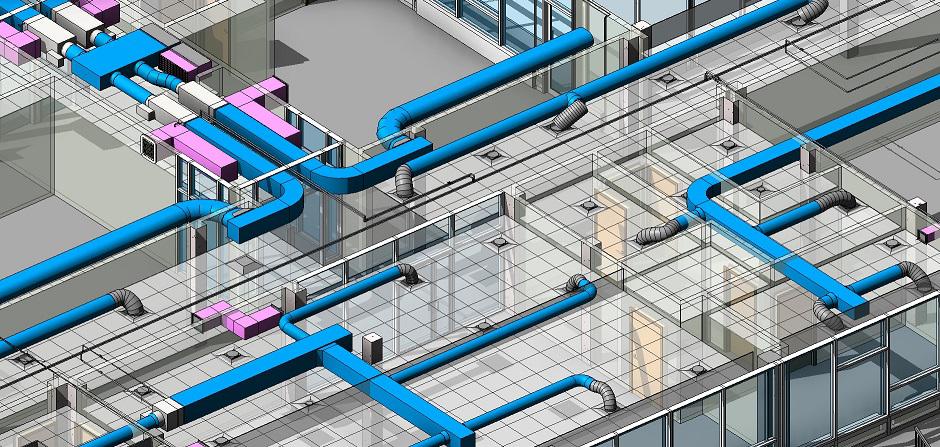In the realm of construction and infrastructure development, the integration of Mechanical, Electrical, and Plumbing (MEP) systems plays a pivotal role. As the demands for sustainable, efficient, and smarter buildings increase, the utilization of advanced MEP services becomes imperative. These innovations not only streamline building designs but also enhance functionality, sustainability, and overall performance.
Integrating Building Systems the Role of MEP
MEP systems form the backbone of any modern building, encompassing a wide array of crucial components such as HVAC (Heating, Ventilation, and Air Conditioning), electrical wiring, lighting, plumbing, fire protection, and more. The synergy among these systems is pivotal in ensuring the comfort, safety, and functionality of the built environment.
The Evolution of MEP Technologies
Technological advancements have propelled MEP systems into a new era. The integration of innovative solutions such as Building Information Modeling (BIM), smart sensors, energy-efficient equipment, and automation has redefined the landscape of building design and management.
Building Information Modeling (BIM) Enhancing Collaboration
BIM technology revolutionizes the way MEP services are designed, visualized, and managed. It allows multidisciplinary teams to collaborate seamlessly, integrating MEP systems into a cohesive digital model. This digital representation facilitates efficient planning, reduces errors, and optimizes the design and installation of MEP systems.
Smart Sensors and lot Optimizing Building Operations
The incorporation of smart sensors and Internet of Things (IoT) devices within MEP services brings forth a new era of building management. These sensors monitor various parameters such as temperature, humidity, occupancy, and energy consumption, providing real-time data that enables predictive maintenance, energy optimization, and enhanced occupant comfort.
Energy-Efficient Solutions: Redefining Sustainability
In the pursuit of sustainability, advanced MEP technologies offer energy-efficient solutions. From high-efficiency HVAC systems to LED lighting and renewable energy integration, these technologies reduce the carbon footprint of buildings while optimizing energy consumption and operational costs.
Automation and Control Systems: Enhancing Efficiency
Automation systems, including smart controls and programmable logic controllers (PLCs), streamline the operation of MEP systems. These systems regulate HVAC, lighting, and other utilities based on real-time data, ensuring optimal performance while minimizing wastage and enhancing efficiency.
Modular MEP Solutions: Speeding up Construction
Modular MEP solutions, prefabricated off-site, are gaining momentum in construction. These pre-engineered systems reduce on-site labor, accelerate project timelines, and ensure precision in installation, thereby enhancing quality control and minimizing disruptions during construction.
Resilient Design: Mitigating Risks
Incorporating resilient MEP services is crucial for mitigating risks associated with disasters and climate change. Flood-resistant electrical systems, fire suppression systems, and backup power solutions ensure building resilience, safeguarding occupants and assets during unforeseen events.
Adapting to Future Needs: Flexibility in Design
Advanced MEP technologies offer scalability and flexibility in design. Systems designed with future adaptability in mind allow buildings to accommodate evolving technology, changing occupant needs, and new sustainability standards without extensive retrofitting.
Challenges and Implementation
While the benefits of advanced MEP technologies are evident, their implementation does pose challenges. These include initial investment costs, the need for specialized expertise, interoperability between various systems, and the requirement for ongoing maintenance and updates to ensure optimal performance.
Efficiency Redefined: Enhancing Building Operations
The integration of advanced MEP technologies fundamentally redefines building operations. These systems optimize energy consumption, monitor performance metrics in real time, and enable proactive maintenance. Smart controls and sensors regulate HVAC systems, lighting, and water usage, ensuring efficient operations while minimizing waste.
Sustainability at the Core: Environmental Considerations
Environmental consciousness drives the adoption of advanced MEP technologies. Energy-efficient HVAC systems reduce carbon emissions, while smart lighting solutions decrease electricity consumption. Additionally, the incorporation of renewable energy sources, such as solar panels and geothermal heating, further reduces a building's environmental impact.
Cost Savings and Return on Investment
While initial investment in advanced MEP technologies might seem substantial, the long-term benefits outweigh the costs. Energy-efficient systems lead to reduced utility bills, while predictive maintenance minimizes unexpected repairs, resulting in significant savings over the building's lifecycle.
Occupant Comfort and Well-being
MEP systems directly influence occupants' comfort and well-being. Temperature control, optimal ventilation, and adequate lighting positively impact productivity, health, and satisfaction. Smart sensors ensure a comfortable indoor environment by regulating air quality and adjusting settings based on occupancy and preference.
Regulatory Compliance and Standards
The adoption of advanced MEP technologies aligns with evolving regulatory requirements and sustainability standards. Buildings equipped with energy-efficient systems often qualify for certifications like LEED (Leadership in Energy and Environmental Design), showcasing their commitment to environmental responsibility.
Technological Innovation Driving Future Solutions
The pace of technological innovation in MEP services continues to accelerate. From advancements in energy storage to the emergence of AI-driven building management systems, these innovations promise even greater efficiency, automation, and customization in future building designs.
Collaboration and Integration in Construction
Integrated project delivery methods foster collaboration among architects, engineers, contractors, and technology specialists. This collaborative approach ensures the seamless integration of MEP systems from the design phase through construction, leading to efficient installations and smoother operations.
Maintenance and Lifecycle Management
Ongoing maintenance and lifecycle management are integral aspects of advanced MEP systems. Regular inspections, updates, and predictive analytics ensure the continued efficiency and reliability of these systems throughout the building's lifecycle.
Educating and Training Industry Professionals
To harness the full potential of advanced MEP technologies, continuous education and training for industry professionals are essential. Keeping abreast of technological advancements ensures that engineers, architects, and technicians are equipped to design, install, and maintain these systems effectively.
Community and Environmental Impact
Beyond individual buildings, the widespread adoption of advanced MEP technologies contributes to broader community impacts. Reduced energy consumption and lower emissions positively influence local environments, contributing to sustainable urban development and a more resilient infrastructure.
Conclusion
In conclusion, advanced MEP technologies are the driving force behind the evolution of modern building design. Their integration brings forth unparalleled benefits in terms of sustainability, efficiency, resilience, and occupant comfort. ENGISOFT ENGINEERING - BIM Staffing & BIM Services As technology continues to advance, the integration of innovative MEP solutions will remain pivotal in shaping the future of smart, sustainable, and resilient buildings.


No comments yet